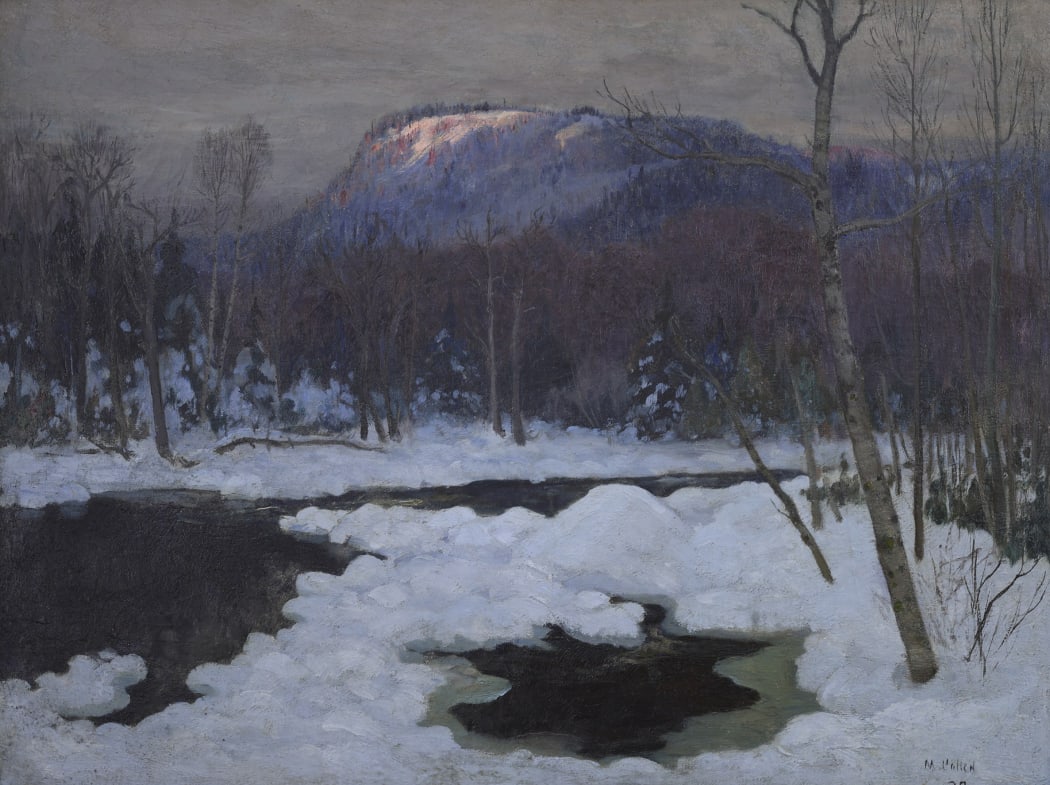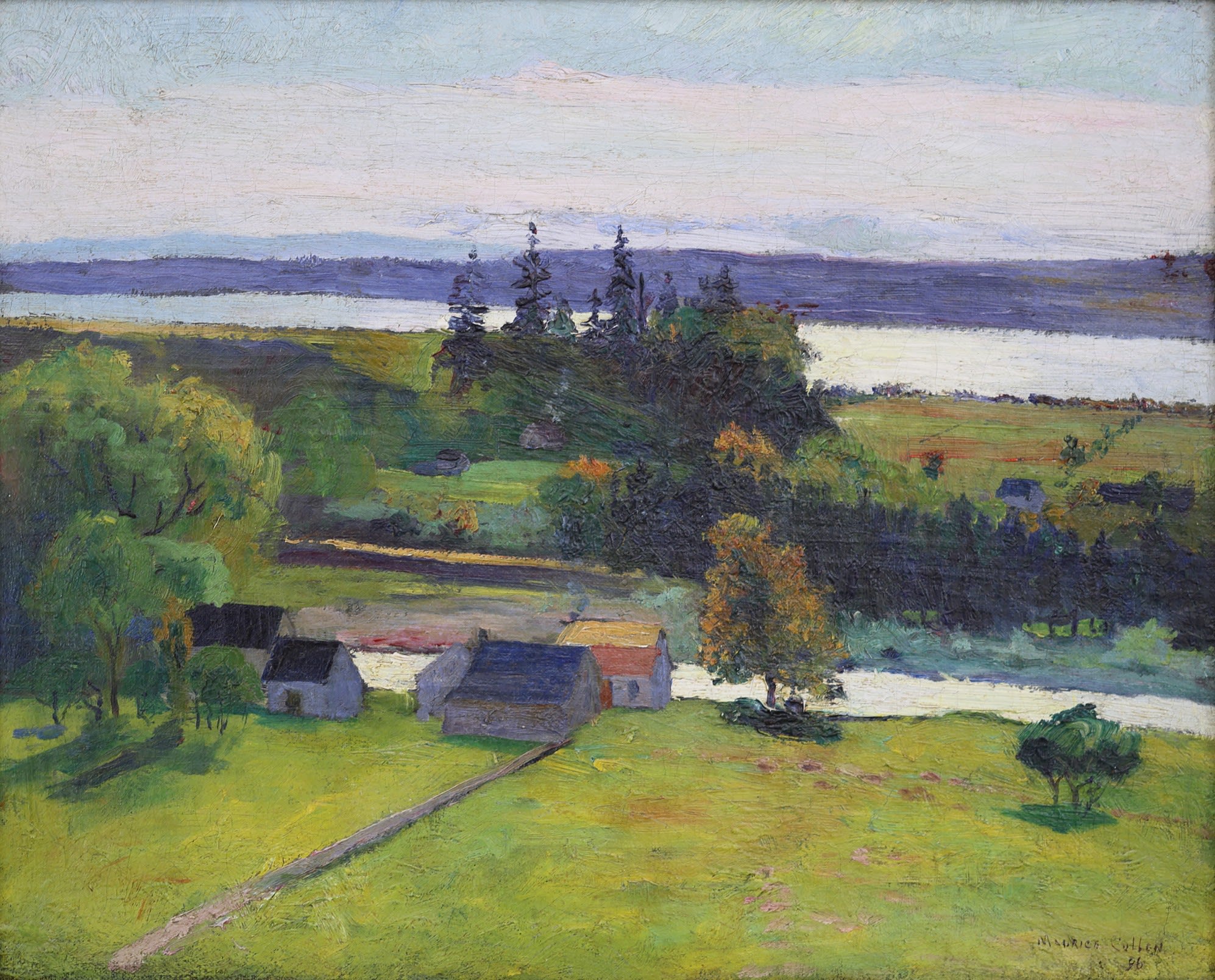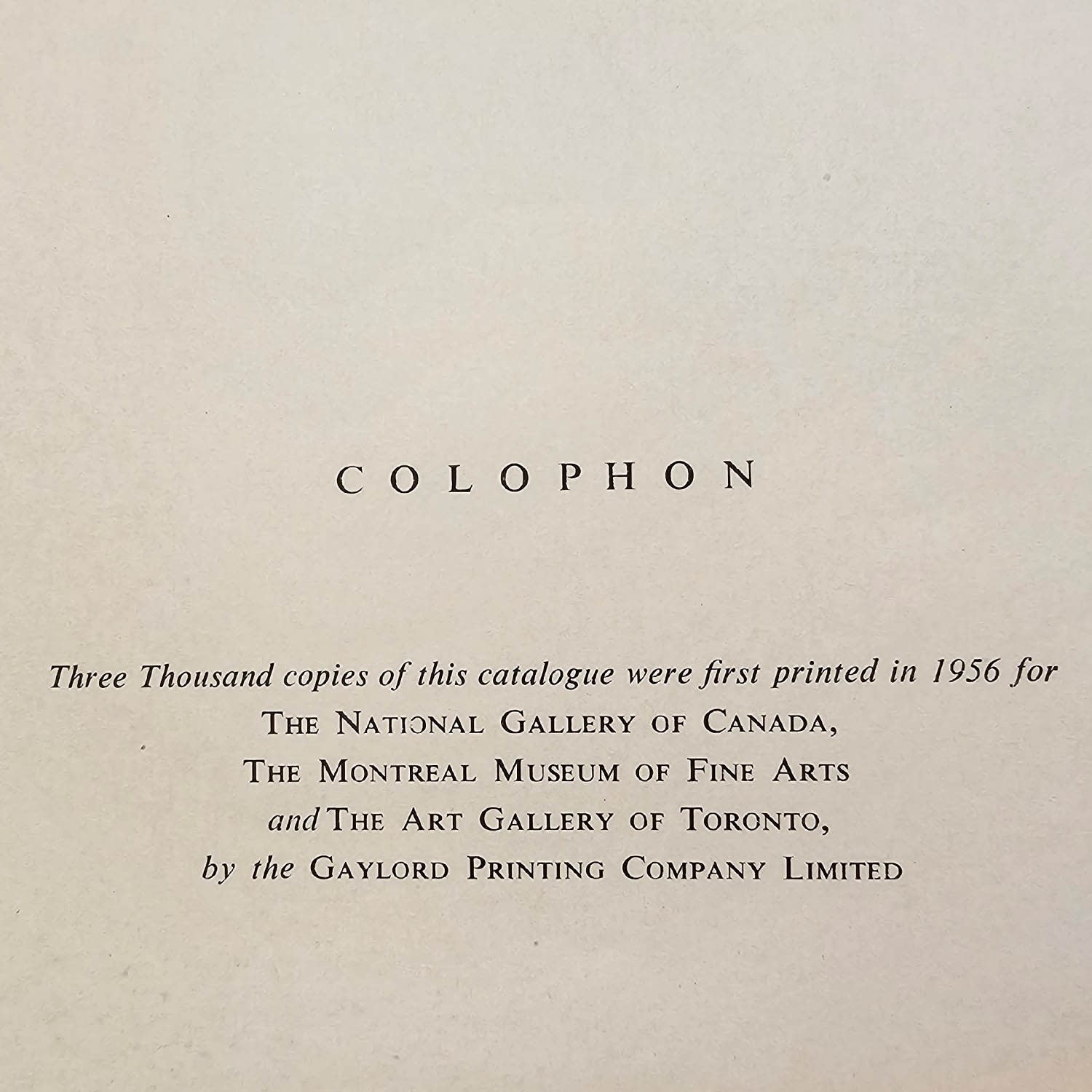
In 1956, Maurice Cullen's work was displayed at the The National Gallery of Canada in collaboration with The Art Gallery of Hamilton, The Art Gallery of Toronto and The Montreal Museum of Fine Arts.

Waterfall on a Crisp Winter's Day, c 1933
The retrospective exhibition showcased a collection that was carefully curated from private collectors and public galleries across the nation. These dedicated individuals went above and beyond to contribute their cherished artworks, making this tribute to Maurice Cullen a heartfelt success.

The initial idea of an exhibition solely featuring the works of Cullen was sparked by the Art Gallery of Hamilton. However, as word spread, it became clear that other galleries shared the same interest and in some cases, had already begun devising their own plans. Thus, a decision was made to make this a collaborative effort between the National Gallery of Canada, the Montreal Museum of Fine Arts, the Art Gallery of Toronto, and the Art Gallery of Hamilton.
T. R. MACDONALD Director, The Art Gallery of Hamilton

MAURICE CULLEN
The impact of Maurice Cullen's return to his homeland in 1895 cannot be overstated. His paintings completely transformed the course of Canadian landscape art, revealing for the first time the true character and ethereal outdoor light of the country. While a few artists had previously attempted to capture the beauty of Canada's towns and countryside, it was through Cullen's masterful brushstrokes that the essence and soul of the land were truly immortalized.

Maurice Cullen; Harbour Scene
As the nineteenth century drew to a close, two prominent figures emerged in Canadian landscape art: Horatio Walker in Quebec and Homer Watson in Ontario. At this time, Canadian painters closely followed European trends, primarily influenced by masters such as Turner, Constable, and the Barbizon painters. However, across the Atlantic in France during the 1870s, a new landscape school was forming - one that emphasized capturing the immediacy and beauty of nature through outdoor sketches. Inspired by greats like Corot, Pissarro, Monet, and Cézanne, these artists boldly ventured out into nature and created works that exuded freshness and vitality. It would take almost fifty years for their revolutionary approach to be fully embraced in the art world. In 1888, a young, ambitious Cullen joined the vibrant and controversial Parisian art scene at just twenty-two years old.
Maurice Cullen entered the world in 1866, born into a bustling town on the shores of St. John's, Newfoundland. The salty air and rocky landscape would shape his artistic sensibilities from an early age. At the tender age of four, his family uprooted and moved to the vibrant city of Montreal, where he would spend most of his formative years. Despite starting work at Galt Brothers commercial firm at just fifteen years old, it became apparent that art was Cullen's true calling. He began taking drawing and modeling classes at the renowned Monument National and quickly showed promise as a sculptor. With the guidance of Philippe Hébert, RCA, the first monumental sculptor in Canada, Cullen honed his skills and even assisted with the awe-inspiring apostle figures on the façade of St. James Cathedral.
However, tragedy struck when Cullen's mother passed away when he was just twenty-two years old. In a twist of fate, she left him a generous sum of money which allowed him to fulfill his dream of traveling to Paris. Initially intending to study sculpture at the prestigious Ecole des Beaux-Arts, Cullen soon found himself captivated by painting instead. Putting aside his tools and clay, he picked up a brush and paint and immersed himself in landscape painting.
After departing from the Beaux-Arts in 1892, Cullen ventured out into the great outdoors to capture nature's beauty en plein air. From picturesque towns like Moret and Giverny to the rugged coast of Le Pouldu, he found inspiration in every corner. His talent did not go unnoticed, and he proudly exhibited five paintings at the Salon in 1894 before returning to his homeland of Canada in 1895.

Maurice Cullen; Riverside Farm, 1896
That same year, Cullen received a significant honor when he was elected as an associate of the Société Nationale des Beaux-Arts. This prestigious organization boasted the names of some of the most influential figures in modern art, including Rodin, Degas, Whistler, Forain, Cottet, and Puvis de Chavannes, who served as president. He found himself in esteemed company alongside the likes of Sir John Lavery and Le Sidaner, a fact he always held with great pride. Even more humbling was the knowledge that his name was proposed for election by none other than Gaston La Touche, solidifying his place among the artistic elite.
In this period of his life, the renowned French government eagerly acquired one of Cullen's masterful paintings, which now rests within the museum at Pithiviers and is proudly loaned for this retrospective exhibition. It was during this time that Cullen also found himself painting alongside the talented James Wilson Morrice, with whom he voyaged to the enchanting cities of Venice and Brittany, as well as Beaupré and Quebec during several winters.
A prominent and discerning French critic of the era, known for his contributions to Le Temps in Paris, took a keen interest in Cullen's work. In 1895, he wrote to the artist in a friendly manner, encouraging him to remain in Paris for several more years in order to fully hone his craft. He even offered to assist Cullen in selling his paintings in Paris from time to time. With unwavering determination and courage, Cullen heeded the advice and persevered.
FR. THIEBAULT-SISSON (Translation)
Despite the alluring prospects and opportunities offered by Paris, Cullen made the decision to return to his hometown of Montreal in late 1895. There, he established a studio on St. François-Xavier Street and spent summers in the picturesque town of Beaupré.

